Matched pair but a 16 gauge and a 12 gauge? - 10/21/19 11:42 PM
On this line on Gavin's auction last December 2018, I mentioned I purchased a 16 gauge SxS side lever Reilly with Perks ejectors, crystal indicators, side clips, etc. SN 27553, quite heavy for a 16 at 6 lbs 9 oz...and number 1 of a pair.
https://www.doublegunshop.com/forums/ubbthreads.php?ubb=showflat&Number=531133&page=1
I also mentioned that Terry Buffum had sold what appeared to be an almost identical gun, number 2 of a pair, but a 12 gauge SN 27854 at Amokeag a couple of years ago.
http://www.amoskeagauction.com/110/133.php
"27553" arrived today after a 10 month odyssey and lo and behold the SN is 27853! It must be the #1 pair to Terry's former gun. (27853 on top, 27854 on bottom):
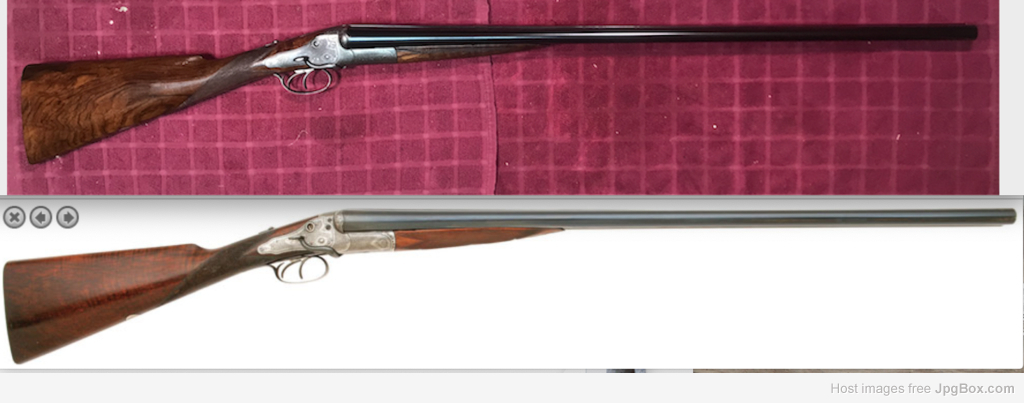
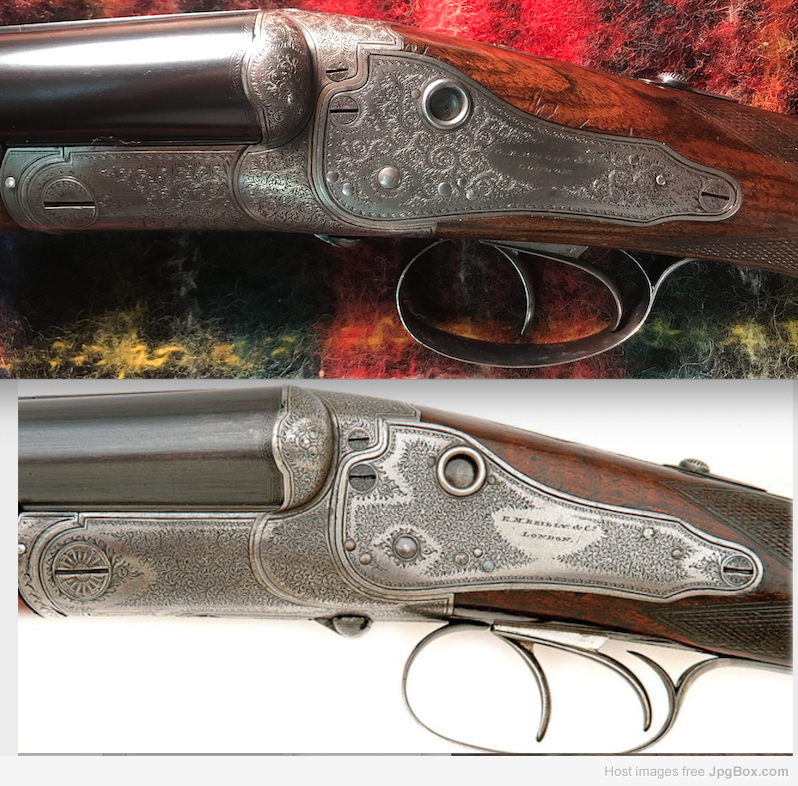
Any suggestions as to how I might locate the new owner of 27854 - sold I think in Spring 2016? I've sent a message to Amoskeag.
https://www.doublegunshop.com/forums/ubbthreads.php?ubb=showflat&Number=531133&page=1
I also mentioned that Terry Buffum had sold what appeared to be an almost identical gun, number 2 of a pair, but a 12 gauge SN 27854 at Amokeag a couple of years ago.
http://www.amoskeagauction.com/110/133.php
"27553" arrived today after a 10 month odyssey and lo and behold the SN is 27853! It must be the #1 pair to Terry's former gun. (27853 on top, 27854 on bottom):


Any suggestions as to how I might locate the new owner of 27854 - sold I think in Spring 2016? I've sent a message to Amoskeag.
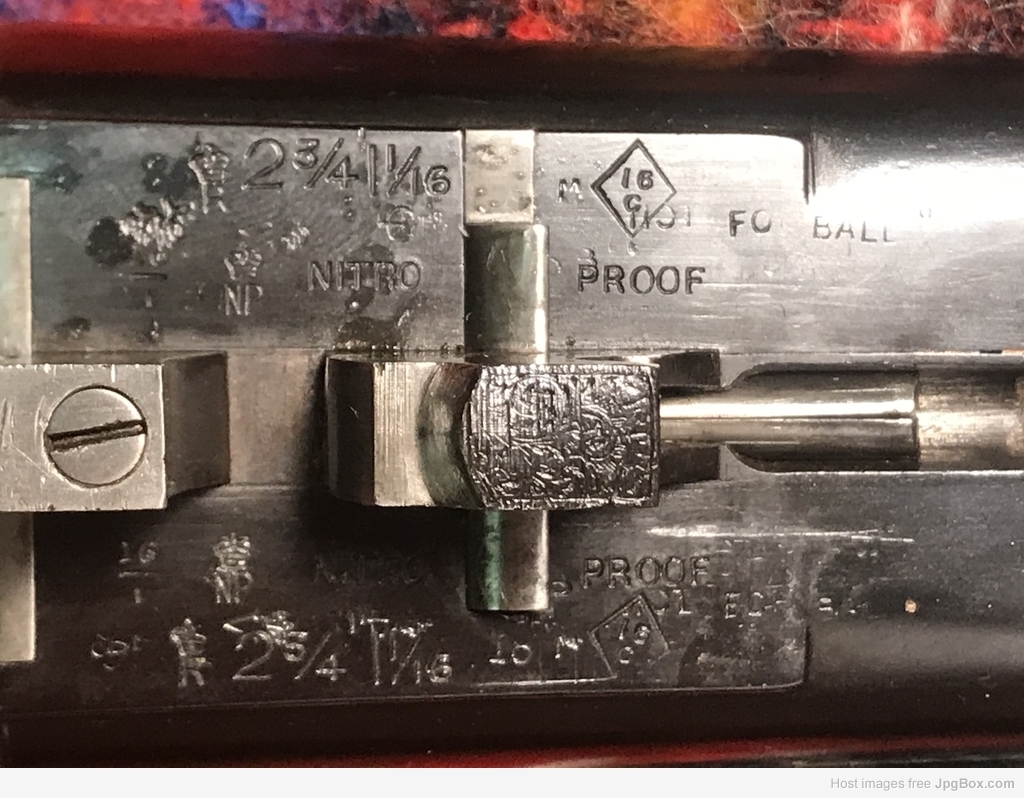
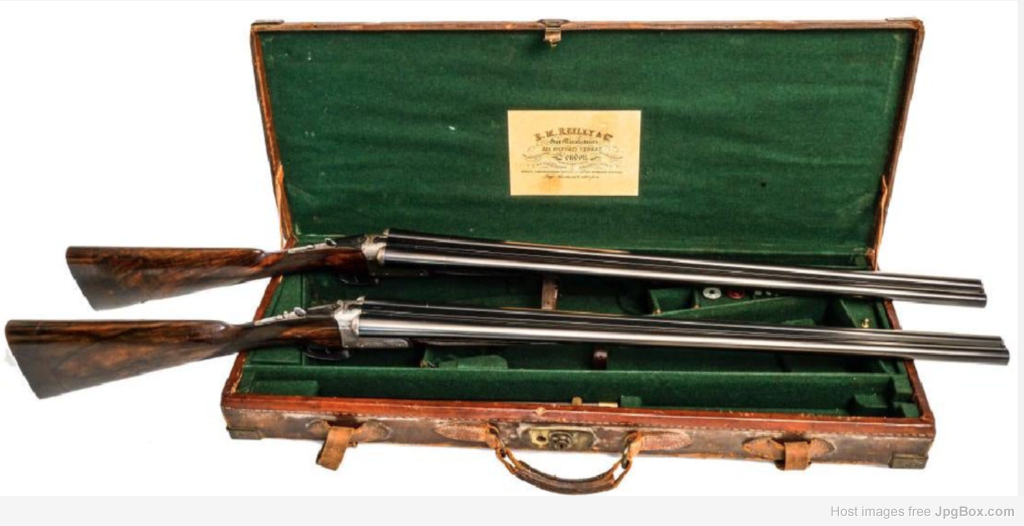
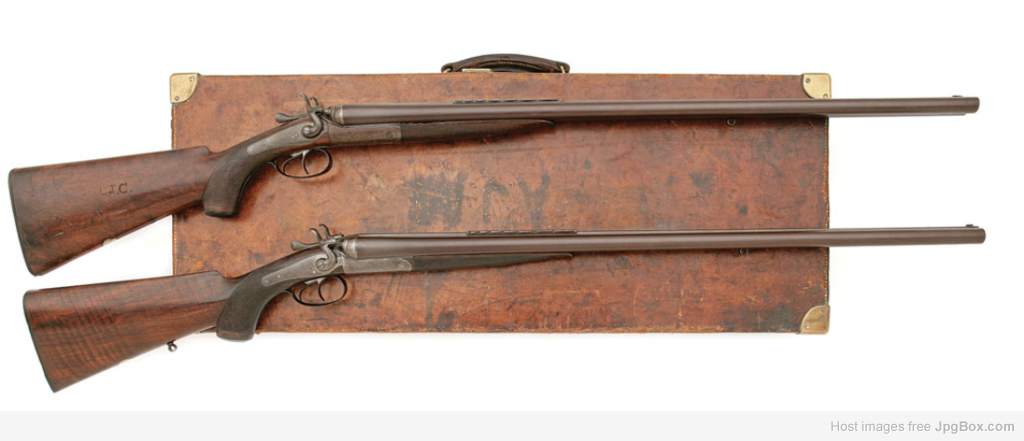
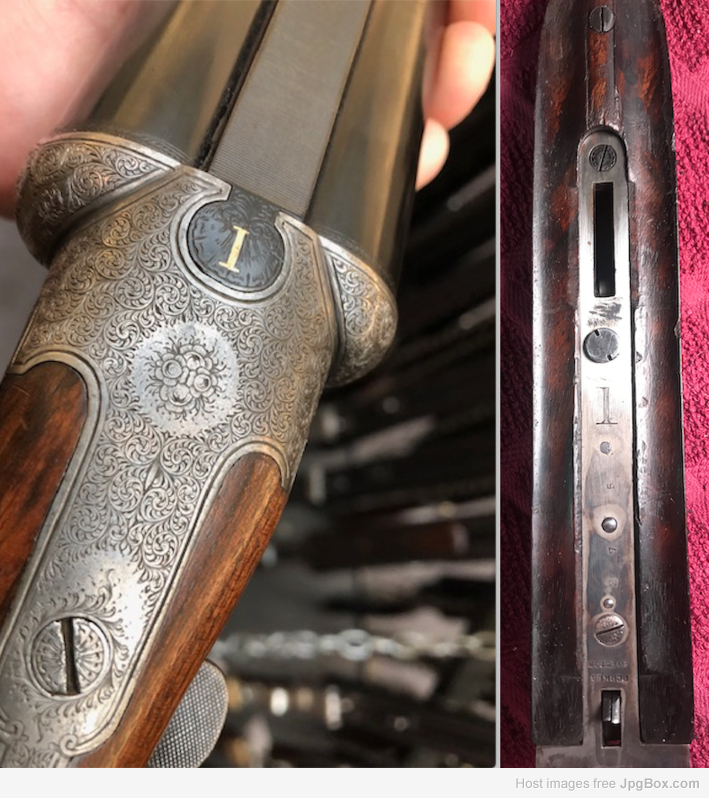
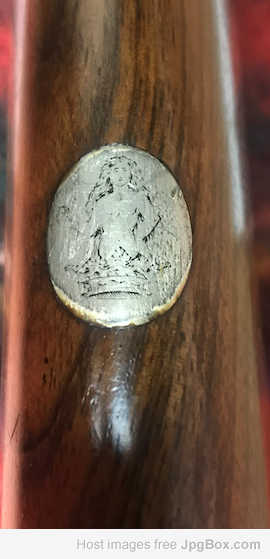
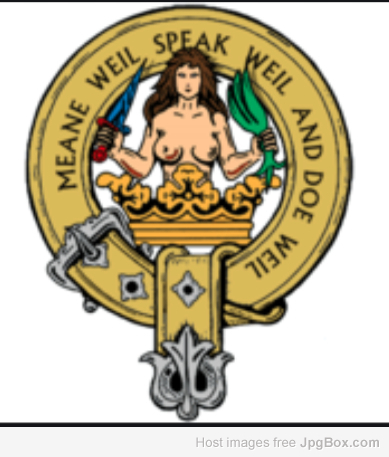
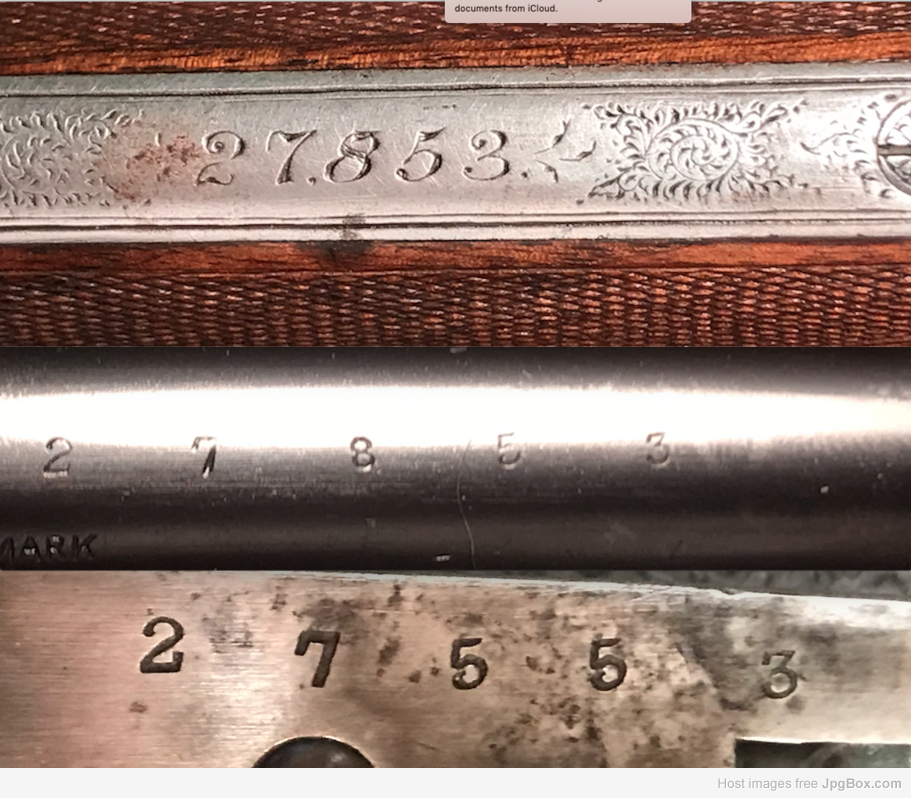
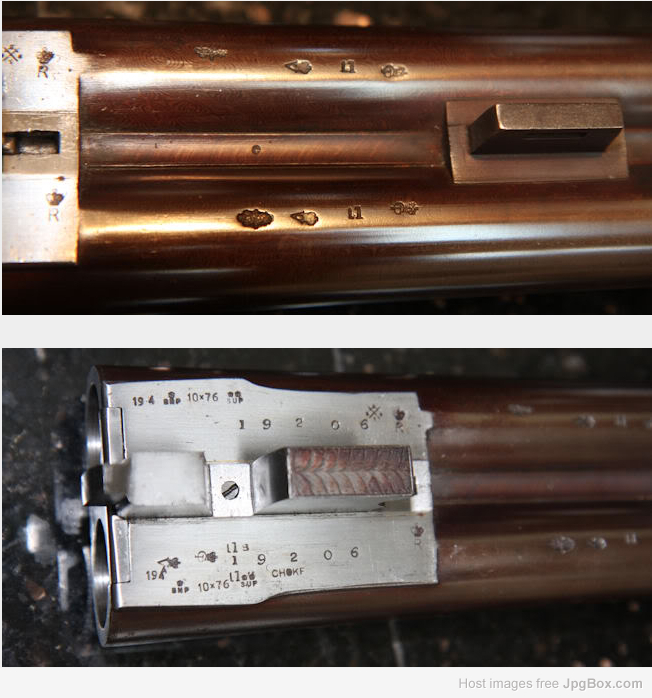
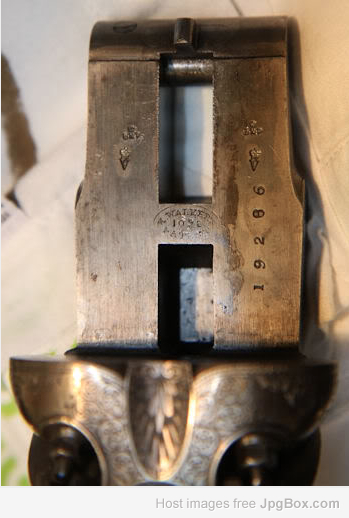


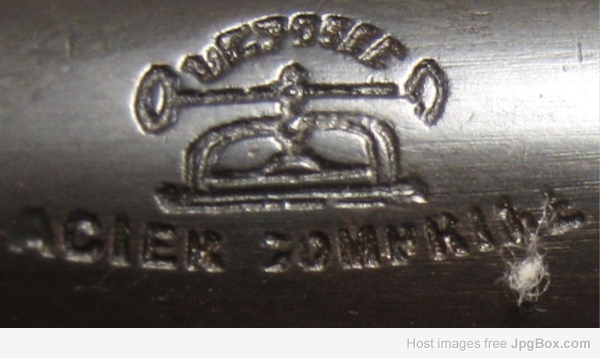
![[Linked Image from jpgbox.com]](https://www.jpgbox.com/jpg/61356_600x400.jpg)
![[Linked Image from jpgbox.com]](https://www.jpgbox.com/jpg/61357_976x523.jpg)